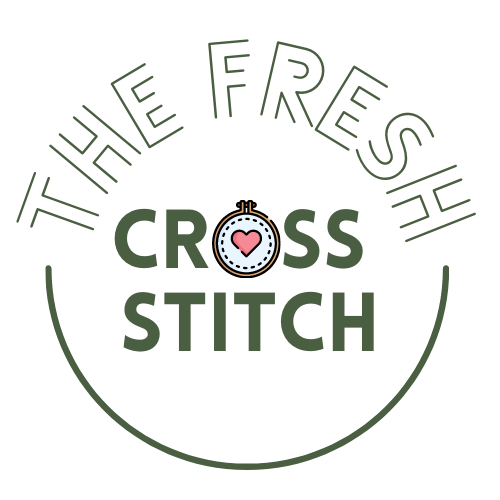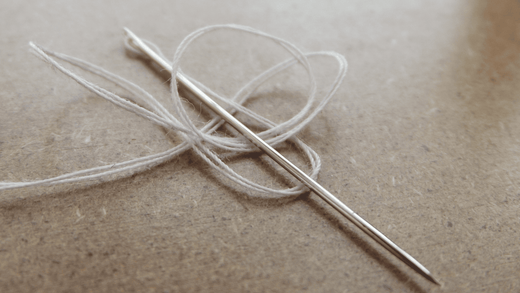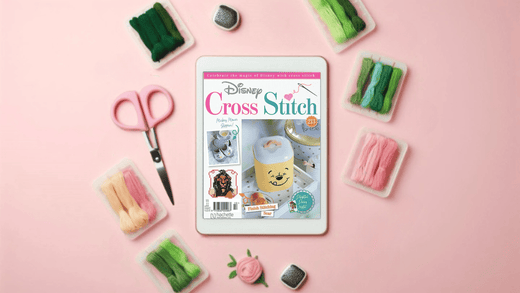They all are forms of embroidery and they all share the basic tools: needle and thread! Needlepoint, punch needle and cross stitch may seem similar, but they differ significantly in terms of materials, methods, and final outcomes. We’re pretty sure if you’re already into one of these hobbies, it’s very likely that you might love the other two as well! But how are they different? Today, we explain the differences between needlepoint, punch needle and cross stitch.
Needlepoint
Needlepoint, also known as canvas work, is a form of embroidery that uses a canvas fabric as the foundation for stitching. It originated in ancient Egypt and has evolved over centuries into various styles and designs. The canvas used in needlepoint is typically made of strong and durable materials like cotton or linen, which can withstand the tension of the stitches.
The main technique in needlepoint involves using a variety of stitches, such as the tent stitch, continental stitch, and basketweave stitch, to cover the entire canvas surface. This results in a dense, textured fabric with intricate patterns and designs. Needlepoint allows for a wide range of creativity, as artists can use different colors and stitch styles to create beautiful images, patterns, and textures.
Needlepoint is often used to create decorative items like pillows, wall hangings, and upholstery, as well as clothing accessories such as belts and handbags. The final product is durable and long-lasting, making it ideal for functional and decorative purposes.
Tools you need for needlepoint:
Canvas: Choose a canvas fabric specifically designed for needlepoint. It comes in various sizes and mesh counts (holes per inch), with larger mesh for beginners as it's easier to stitch on.
Needles: Use tapestry needles for needlepoint. They have a blunt end, making it easier to navigate through the holes in the canvas.
Threads: Select embroidery threads such as wool, cotton, or silk. Stranded cotton is the most commonly used thread for needlepoint. Choose a variety of colors to match your design.
Scissors: Sharp embroidery scissors are essential for cutting threads cleanly.
Frame or Hoop: While not necessary, using a frame or hoop can help keep the canvas taut and make stitching more comfortable.
Punch needle
Punch needle, also known as needle punching or punch embroidery, is a relatively newer form of embroidery that has gained popularity for its speed and ease of execution. It originated in ancient Asia and was traditionally used to create intricate designs on clothing and textiles. In punch needle embroidery, a hollow needle is used to create loops of thread on the fabric's surface, resulting in a textured and raised design.
The needle used in punch needle embroidery is specially designed with a hollow shaft and a pointed end. The thread is threaded through the hollow shaft and then punched into the fabric. As the needle is pulled through the fabric, it creates loops on one side and straight lines on the other side, giving the design a distinct appearance.
Punch needle embroidery can be done on various fabrics, including weaver's cloth, monk's cloth, and even clothing items like t-shirts. Unlike needlepoint and cross stitch, punch needle work is typically done from the backside of the fabric, which means the artist cannot see the design as they work. This requires skill and experience to ensure the desired design is achieved accurately.
Punch needle embroidery is popular for creating textured rugs, pillow covers, wall hangings, and other decorative items. Due to its speed and simplicity, it is an excellent option for beginners or those looking for a quick and satisfying embroidery project.
Tools you need for punch needle:
Punch needle: The most crucial tool for punch needle embroidery is the punch needle itself. There are various types and sizes of punch needles available, so choose one that suits your project and fabric.
Fabric: Select a suitable fabric like weaver's cloth or monk's cloth. These fabrics are tightly woven and prevent the loops from pulling out easily.
Thread: Choose embroidery floss or yarn in various colors to achieve the desired design.
Embroidery hoop: A hoop or frame is essential for punch needle embroidery to keep the fabric tight and stable while punching.
Transfer pen or pencil: Use a transfer pen or pencil to draw your design on the fabric before punching.
Cross stitch
Cross stitch is one of the most popular and the oldest form of embroidery, with a history dating back to ancient Egypt and China. It involves creating small X-shaped stitches to form a pattern on the fabric. Cross-stitch patterns are usually presented on a grid, indicating where each stitch should be made. The fabric used for cross stitch can vary, but Aida cloth and evenweave fabrics are commonly used due to their regular weave and easy-to-count squares.
Cross-stitch patterns can range from simple designs to complex and intricate works of art. The stitches are often done over a single thread, but some projects may use multiple threads to achieve a bolder and more textured look. The variety of thread colors and the ability to blend them make cross stitch an incredibly versatile art form.
Tools you need for cross stitch:
Fabric: Aida cloth is the most popular fabric, but there are other types of cross-stitch fabric, like evenweave. Aida fabric has visible squares, making it easier to count stitches, while evenweave fabric has a more refined look. You can also use soluble cross-stitch fabric if you prefere to cross-stitch directly on clothes or nicer clothes.
Cross-stitch needles: Use a tapestry needle with a large eye to accommodate multiple strands of embroidery floss. Embrodery and cross-stitch needles also have a rounder end, so it passes smoothly.
Embroidery floss: Choose stranded cotton embroidery floss in various colors to match your pattern.
Scissors: Sharp embroidery scissors for cutting threads.
Embroidery hoop or frame: A hoop or frame helps keep the fabric taut and prevents it from wrinkling while stitching.
Cross-stitch pattern: If you’re a beginner, start with a simple pattern. These cross-stitch patterns include the list of colors required and a kind of map with all the necessary stitches.
In conclusion, needlepoint, punch needle, and cross stitch are three distinct forms of embroidery, each with its own techniques, materials, and applications. Needlepoint involves covering a canvas with a variety of stitches, while punch needle creates textured designs using loops punched into the fabric. On the other hand, cross stitch utilizes X-shaped stitches on a grid pattern. All three art forms offer a wide range of creative possibilities and can result in beautiful and decorative finished pieces. Whether you prefer the intricacy of needlepoint, the speed of punch needle, or the classic charm of cross stitch, each technique provides a rewarding and enjoyable embroidery experience.








